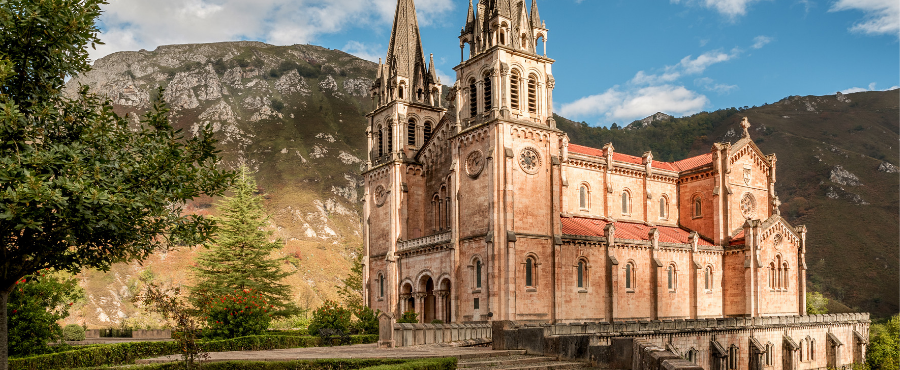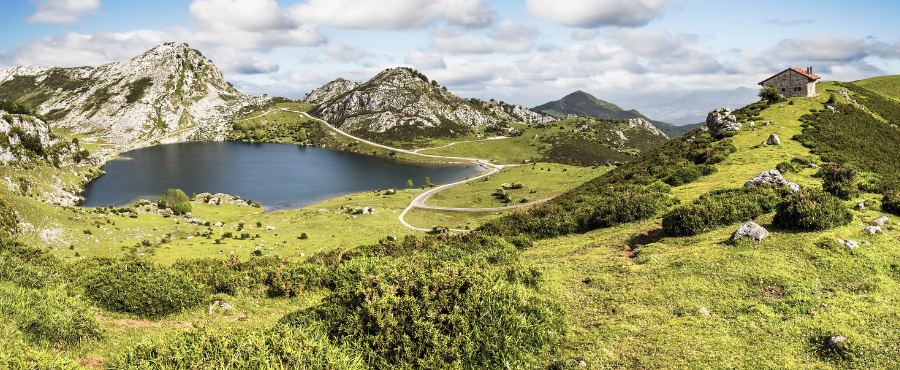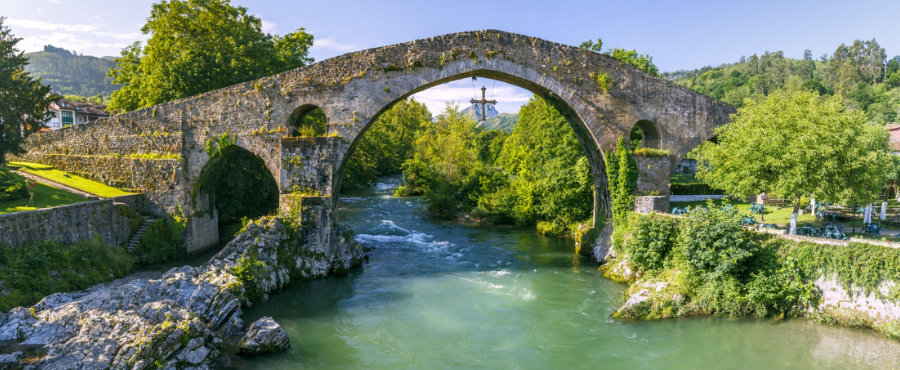When making an Asturias excursion, Covadonga and Cangas de Onís are two places that should definitely be on the map. Both have a great importance in the history of the region and are close to each other, so it is perfectly possible to visit them on the same day.
If you are looking for the perfect day trip in Asturias, read on!
Covadonga: The Holy Cave and the lakes
Covadonga is located in the municipality of Cangas de Onís, in the heart of the mountains of Mount Auseva. This is where the Sanctuary of the Virgin of Covadonga hides; it's the patroness of Asturias, to which the locals fondly call La Santina. Besides having traditionally been a place of worship, it is also the scene of an important chapter in the history of Spain.
The ancient chronicles verify that, at the beginning of the 8th century, most of the peninsula had been taken by the Muslims. However, despite their attempts, they failed to take over the northern lands again and again. Back in 718, a rebellion led by Don Pelayo, an Asturian warrior, began to take shape. They decided to face the Muslim army and fought against them in the mountains where Covadonga is located today. The brave Don Pelayo came up victorious and, thanks to his win, he was proclaimed King of Asturias. This fact also meant the beginning of the Christian Reconquest that would last eight centuries.

However, there is also a part of the legend that says that Pelayo fought with a divine force and that even the stones thrown by the Muslims with their catapults miraculously turned against them. It is said that this happened thanks to the Virgin of Covadonga who appeared to Don Pelayo to give him the necessary help to defeat the Muslims.
The cave where it is said that the virgin made her appearance, La Santina, has become a beautiful stone sanctuary. In addition, for locals to be able to venerate the Virgin, a small chapel was built where Don Pelayo is buried. Both the grotto and the chapel, have become a place of pilgrimage and receive hundreds of visits a day since both figures are truly loved by the Asturians. Without a doubt, it is one of the places to see in Asturias if you want to soak up the history of the place.

Very close to these places, we also find the famous Lakes of Covadonga. An emblematic place that gave rise to the National Park of the Picos de Europa for more than 100 years. There you will find large glacial lagoons formed by lakes Enol, La Ercina and a smaller one called El Bricial, which only has water when it melts in the mountains. All this, also, surrounded by mountains, green meadows and deciduous forests. A landscape that gives meaning to the famous phrase: “Asturias, natural paradise”. It's a stop that should not be missing in any Asturias guide.
Cangas de Onís: the Roman bridge and the cider houses
Cangas de Onís, located about 20 kilometers from the lakes, is the last stop proposed for your Asturias excursion… and it's a perfect one. This beautiful inland town has a lot to offer: culture, tradition, gastronomy ...
So, what's exactly to see in Cangas de Onís? First, the Roman bridge that dates from the High Middle Age, although the current one is based on another from the Roman era. This connects the two banks of the Sella River at its pass in Cangas. It is also known by locals as the Puentón and is one of the main symbols of Asturias. It's so important that it's part of Cangas de Onís's shield, together with the cross that hangs from it and that remembers the victory of Don Pelayo against the Muslims. This is also the same cross that appears on the Asturian flag.

All this said, in any trip through Asturias, gastronomy can not be absent. Strolling through the village, which highlights its beautiful stone and wood houses, you will find many cider houses and restaurants. Don´t forget to drink a culín (small serve of the local sidra) with the locals and if you want to eat or dine, depending on the time, here are some of our recommendations: Molín de la Pedrera, Sidería la Caldera, El Molín de Mingo, El Repelao, El Palco, El Cenador de los Canons and Restaurant El Palco.
At the end of this day, you will have a very complete picture of what this beautiful land really is about: history, landscapes and gastronomy. So, although there are many routes through Asturias, this is undoubtedly one of the most recommended to keep it in mind for your plans.